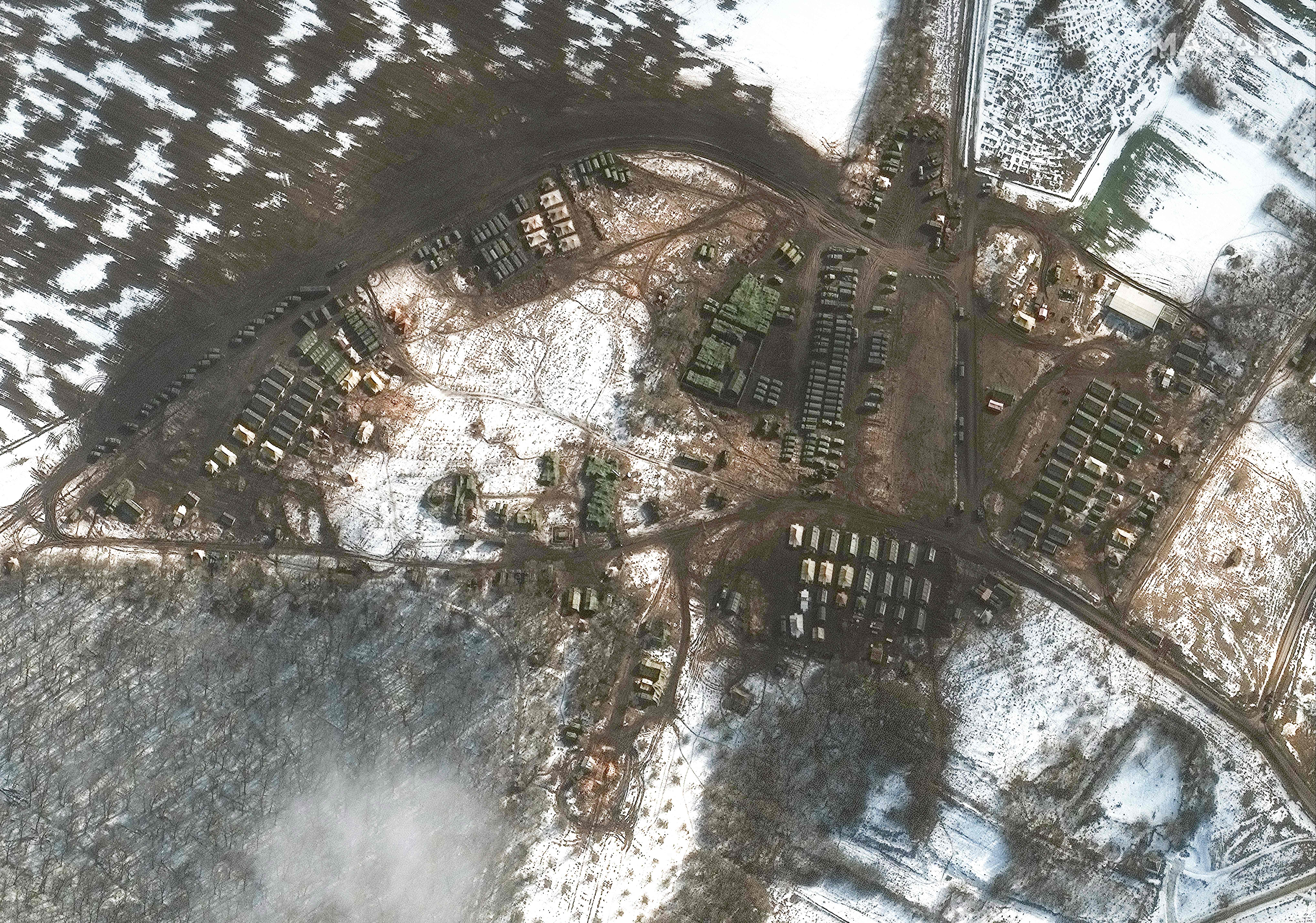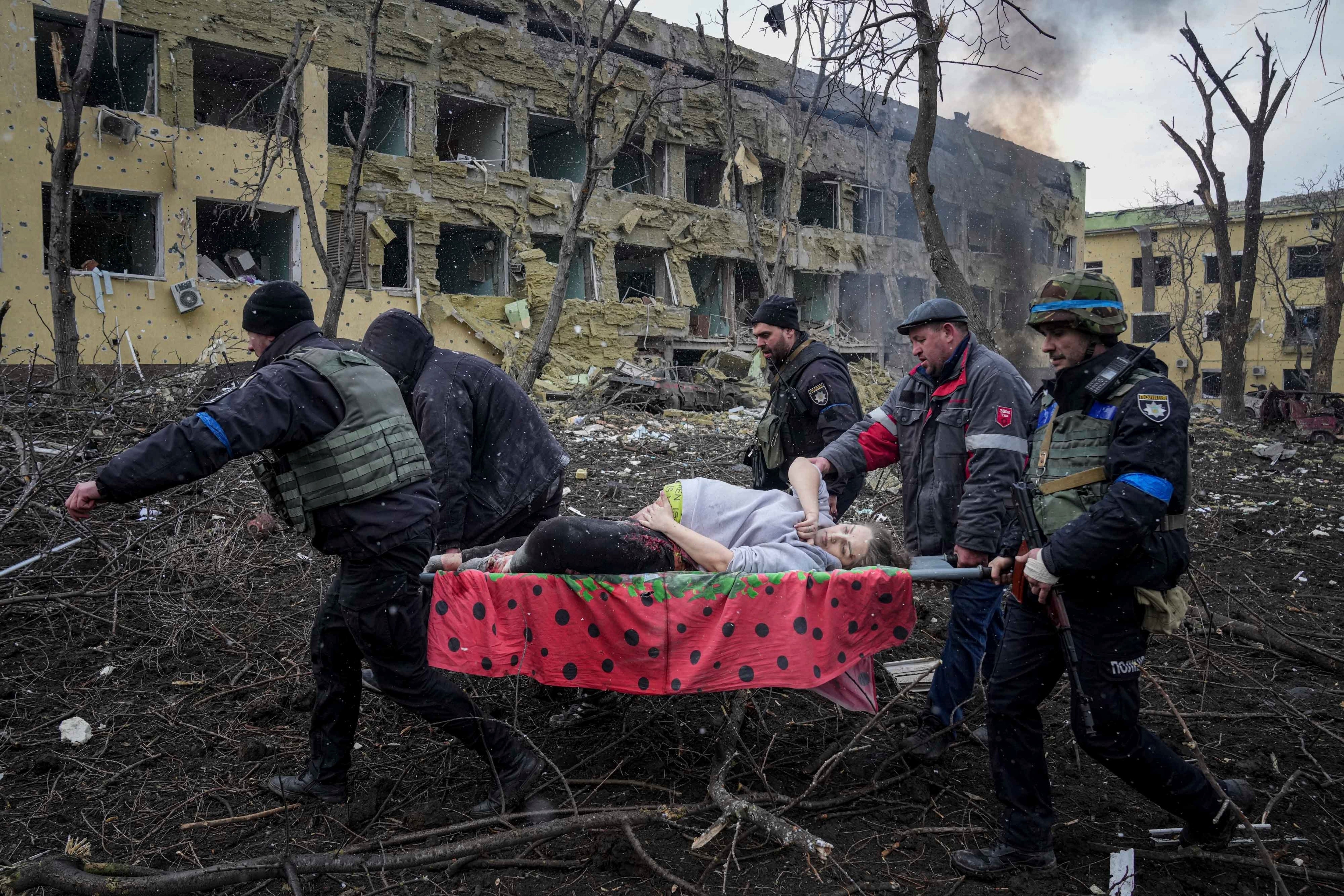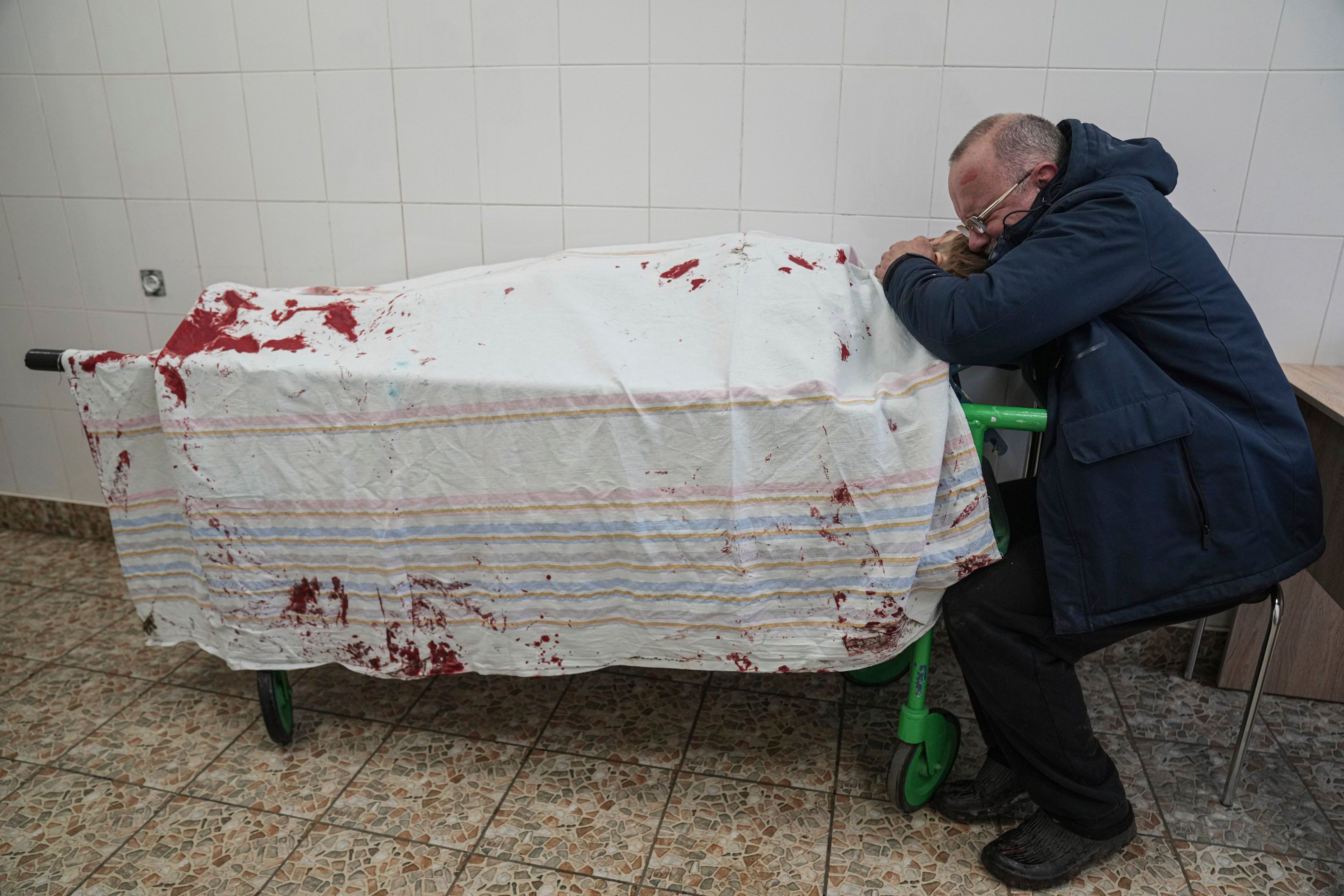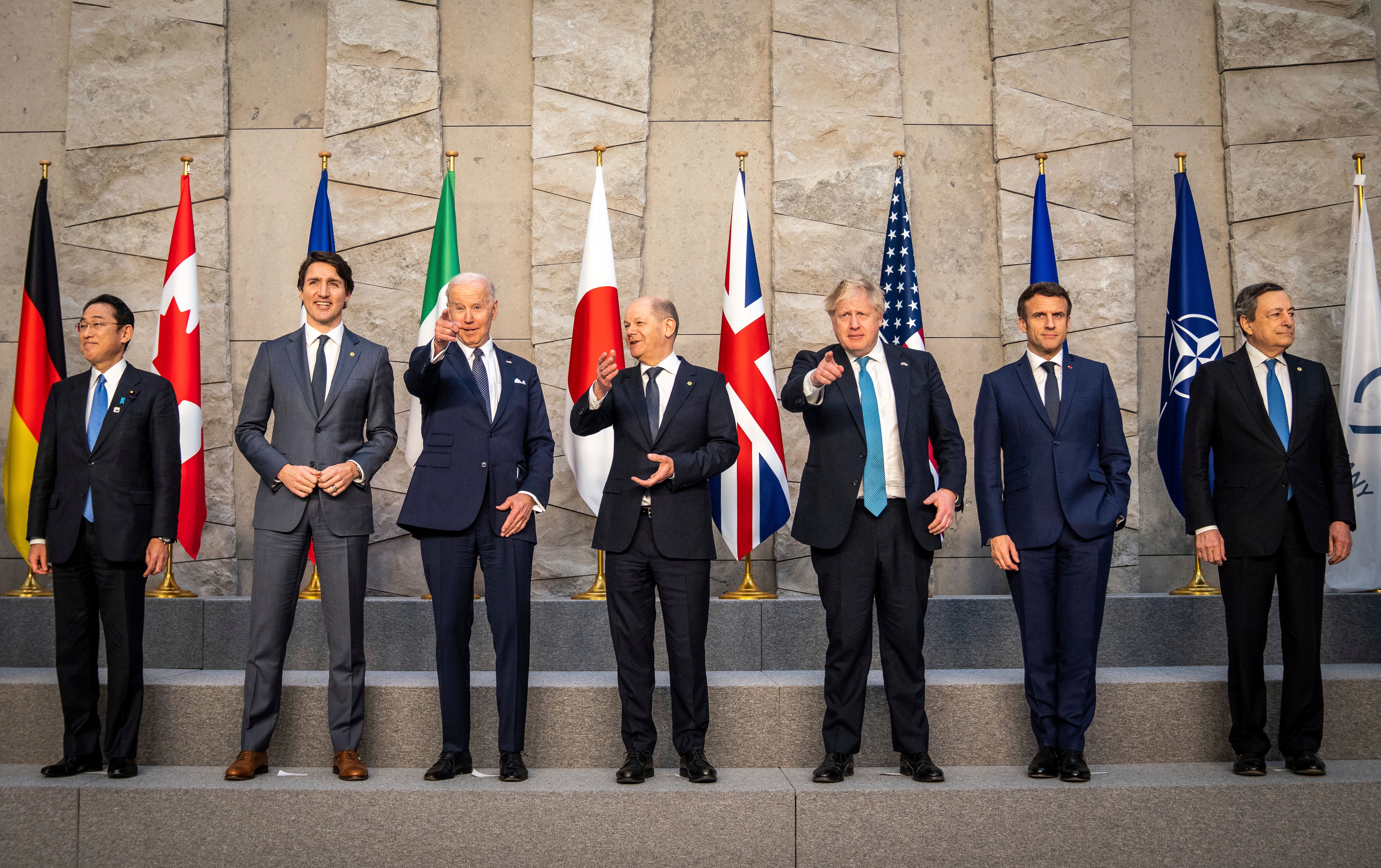One month of war: How tragedy unfolded in Ukraine as the world looked on in despair
In just four weeks, more than 10 million people have been displaced as Russian shelling has destroyed several Ukrainian towns and cities
Your support helps us to tell the story
From reproductive rights to climate change to Big Tech, The Independent is on the ground when the story is developing. Whether it's investigating the financials of Elon Musk's pro-Trump PAC or producing our latest documentary, 'The A Word', which shines a light on the American women fighting for reproductive rights, we know how important it is to parse out the facts from the messaging.
At such a critical moment in US history, we need reporters on the ground. Your donation allows us to keep sending journalists to speak to both sides of the story.
The Independent is trusted by Americans across the entire political spectrum. And unlike many other quality news outlets, we choose not to lock Americans out of our reporting and analysis with paywalls. We believe quality journalism should be available to everyone, paid for by those who can afford it.
Your support makes all the difference.One month ago, Vladimir Putin appeared on television in the early hours of the morning to announce Russia’s invasion of Ukraine and warned the West not to intervene.
After weeks spent amassing troops on the country’s border and repeated denials that he was planning to wage war, the Russian president launched what he described as a “special military operation” to “demilitarise” and “de-Nazify” Ukraine.
Within hours explosions were heard outside the Ukrainian capital Kyiv and heavy clashes were reported in several other major cities, sparking the biggest land conflict in Europe since the Second World War.
In just four weeks, more than 10 million people have been displaced as Russian shelling has destroyed several Ukrainian towns and cities.
Hundreds of civilians have been caught in the crossfire, with entire families killed while trying to flee their homes as even supposed safe evacuation corridors have come under attack.
But Russia has achieved less and struggled more than anticipated amid fierce resistance from its neighbours, led by Ukraine’s president Volodymyr Zelensky.
Moscow has also been hammered by sanctions from around the world, with the UK and US both announcing fresh measures on Thursday, the first month anniversary of the deadly conflict.
Four weeks after the invasion first began, here’s a look back at how events unfolded.
Initial hope, uncertainty and scepticism
In the months leading up to Russia’s attack on Ukraine, concern was rife among international leaders of an imminent invasion.
In November, satellite images showed a build-up of Russian troops along the Ukraine border and Kyiv claimed Moscow had mobilised about 100,000 soldiers along with tanks and other military equipment.

But despite this Russia repeatedly denied a planned invasion, and in January accused Washington and its allies of provoking a war by drumming up the threat.
Russia made detailed security demands to the West, including that Nato should cease all military activity in Eastern Europe and Ukraine and never accept Ukraine or other former Soviet nations as members.
US and Russian officials met in Geneva for diplomatic talks in January, but issues went unresolved and Nato subsequently put forces on standby and reinforced its military presences in Eastern Europe.
On 11 February, US president Joe Biden’s national security adviser Jake Sullivan said US intelligence suggested a Russian invasion could begin within days.
But just days later things took a more optimistic turn as 15 February began with hopes of peace after Russia announced it had begun to withdraw troops from Ukraine’s borders.
However the West soon accused Moscow of failing to carry out any genuine de-escalation amid evidence field hospitals were being built in Belarus near the border with Ukraine and army formations were being brought closer to the frontier.
Tension and escalation

Western fears of an all-out war began mounting on 21 February as Putin ordered his troops to two breakaway regions in eastern Ukraine after signing a decree recognising their independence.
The Russian president said the forces would be used to “maintain peace” in the so-called republics of Donetsk and Luhansk.
The US dismissed the claim as “nonsense” and said the move amounted to the “beginning of an invasion”. A day later, Biden announced its first tranche of sanctions against Russia.
On 23 February, Zelensky said Russia was attacking his country’s military infrastructure and border guards as he called for martial law.
Full-scale invasion
Many woke on Thursday 24 February to news that Putin had waged a full-scale assault on Ukraine.
CCTV footage showed tanks and other military vehicles rolling across the Crimea border as Russian forces entered the country from Belarus in the north, Crimea in the south, and Russia to the east.
In his pre-dawn televised address, Putin insisted he did not plan to occupy his neighbour but said Moscow’s response would be “instant” if anyone tried to stop the action.

Explosions soon rang out on the outskirts of the cities of Kharkiv, Kramatorsk, Mariupol as well as the capital Kyiv.
Zelensky introduced partial martial law and urged people to stay at home but the roads out of Kyiv became packed with cars soon after the airstrikes began, while others headed to the capital’s underground stations for shelter.
Russia claimed it was only aiming at military targets but reports quickly emerged of civilian areas being heavily shelled.
As its advance largely stalled, Russia instead began a campaign of brutally shelling cities across Ukraine.
A six-year-old child was among at least three people killed when a maternity hospital in the besieged southern port city of Mariupol was bombed just two weeks into the attack.

Days later, a theatre in the city where more than 1,000 people, mostly women and children, had sought shelter was also bombed despite the Russian word for “children” being emblazoned on the ground outside in large white letters.
More than 100 workers at Ukraine’s infamous Chernobyl nuclear power plant were left trapped for days, unable to leave after Russian forces seized the plant on the first day of the invasion.
Russian forces then began attacking Zaporizhzhia, Europe’s largest nuclear power plant, causing a fire in a training facility which was later put out.
Thousands killed, millions displaced

After four weeks of war, the human cost has been devastating for both sides – but it is difficult to provide an exact number of civilian and military casualties as Russia and Ukraine give vastly different reports.
Hundreds of Ukrainian civilians have been caught in the crossfire, with entire families killed while trying to flee their homes.
Ten million people have been displaced in Ukraine, including 3.6 million refugees who have left the country.
According to the United Nations children’s agency, half of the country’s children, or 4.3 million of an estimated 7.5 million, have now fled their homes, in one of the largest such displacements since the Second World War.
A mother was killed alongside her young daughter and teenage son while attempting to flee along an evacuation corridor in Irpin, on the outskirts of Kyiv, during a “ceasefire” on 6 March.

IT worker Tatyana Perebeynos, 43, her nine-year-old daughter Alise and 18-year-old Nikita, were identified as the people pictured lying dead on a roadside surrounded by their belongings.
A doctor issued an angry plea just days into the invasion after distressing images emerged of a six-year-old girl in unicorn pyjamas lying fatally wounded in hospital after an apartment block was shelled in Mariupol.
At least five journalists have also been killed while reporting on the conflict.

Russia has not updated its official death toll for three weeks, with its last figures showing 498 Russian soldiers had been killed in action and 1,500 wounded as of 2 March.
However the real figure is now thought to be closer to 10,000 deaths among Russian military personnel.
Where are we now
The most pressing fear now is whether Putin will resort to using chemical or biological weapons to advance his invasion following the unexpected resistance from Ukraine.
Biden this week warned the Russian leader’s “back is against the wall” and there is a “clear sign” he is now resorting to false flag attacks as an excuse to unleash the banned weapons.
The US president also believes Russia could be preparing to launch cyberattacks against critical infrastructure as the war continues.

Nato has agreed to double its defences by moving 40,000 troops to its eastern flank in light of Russia’s invasion of Ukraine, following an historic meeting of leaders in Brussels.
Jens Stoltenberg confirmed four new battlegroups will be sent to Slovakia, Hungary, Bulgaria and Romania – in addition to four others in the Baltic countries and Poland – to support Ukraine. He also pledged military aid, including additional weapons.
Nato leaders announced they had also agreed to supply hazmat suits to Ukrainians amid growing concerns Putin may use chemical and biological weapons.
The UK is also to send 6,000 more missiles comprising anti-tank and high-explosive weaponry.
The real question though, is how long can this go on for? With experts in the UK and the US warning the war could go on for years rather than months, it appears there is no end in sight to the tragedy in Eastern Europe yet.

Join our commenting forum
Join thought-provoking conversations, follow other Independent readers and see their replies
Comments